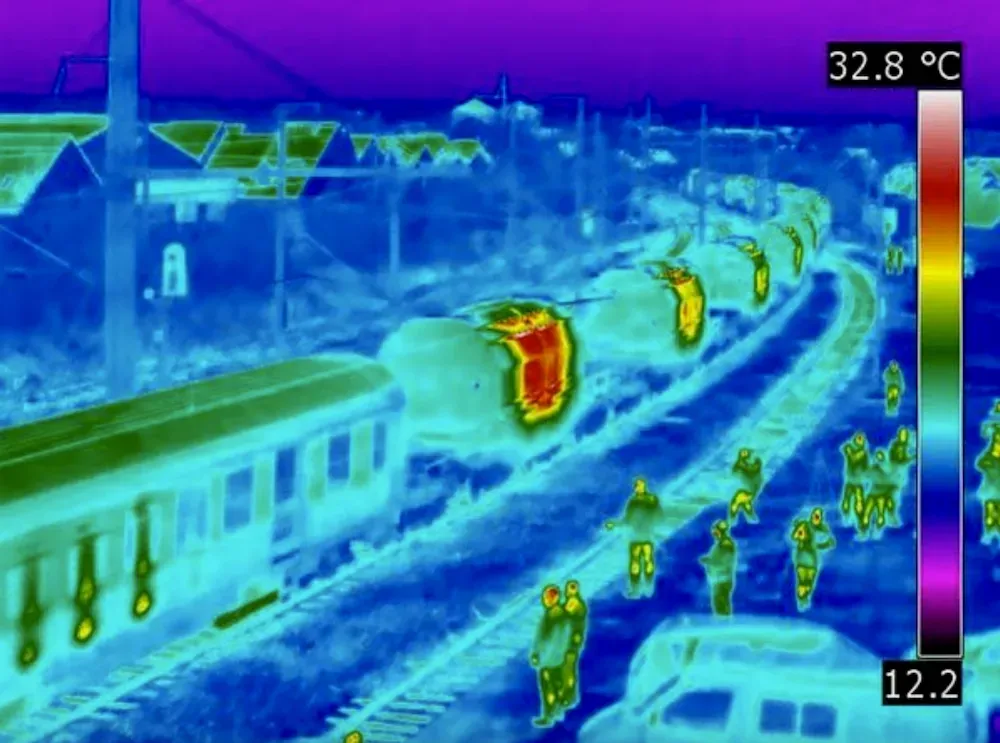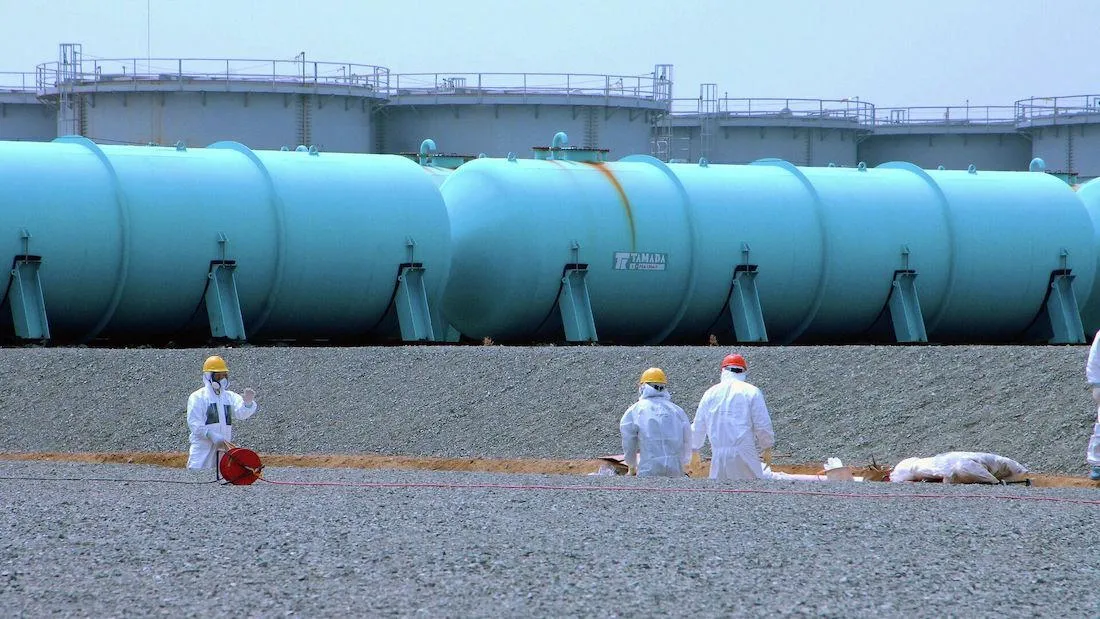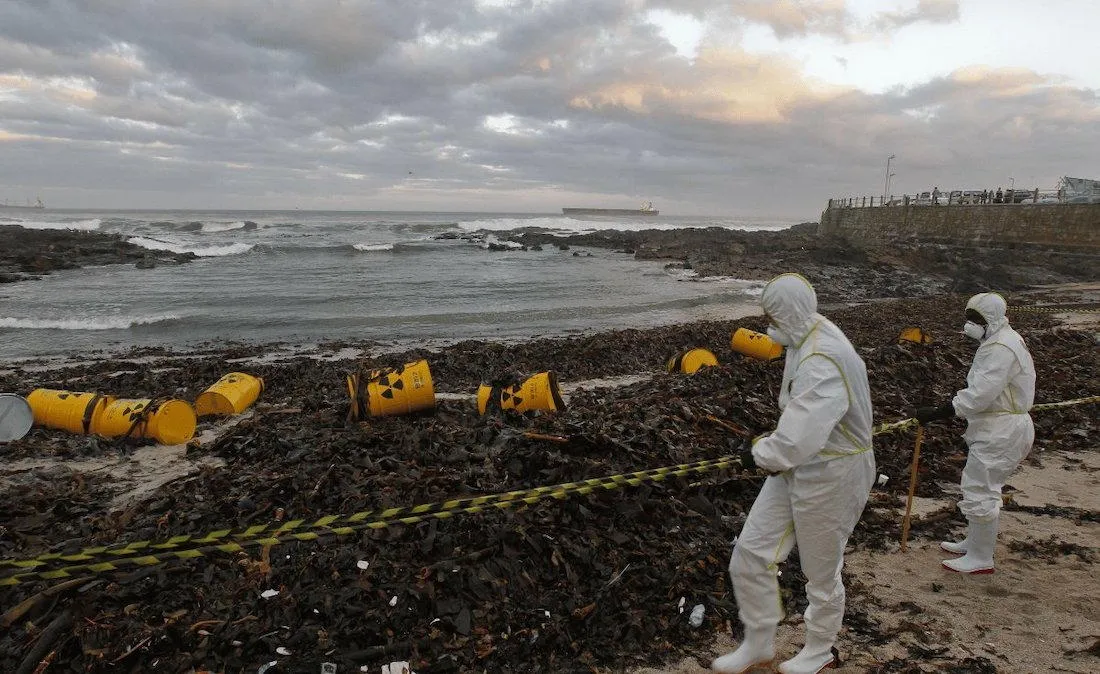
Fukushima Daiichi Nuclear Disaster: 2024 Aftermath, Risks, and Insights
Chernobyl, Atomic Tests and Depleted Uranium Warfare Downwinders
Tracy Turner This Fukushima article has bits of Doug Rokke, Libby Halevy and Arni Gunderson - all people defamed by Big Nuke.

On March 11, 2011, The Fukushima Daiichi nuclear power station in Japan experienced three meltdowns in reactors 1, 2, and 3 after a tsunami struck in March 2011. The catastrophic event had immediate consequences for the environment and public health and also left a lasting legacy of challenges in nuclear safety and disaster response.
1. Hidden Data: It is estimated that the real-world radiation levels released during the disaster and ongoing drainage into the Pacific Ocean were/are significantly higher than reported. Research suggests that early readings may have been manipulated to downplay the crisis, mirroring how the U.S./Japanese Governments-General Electric/TEPCO downlisted nuclear fallout data during the Cold War.
2. Plutonium in the Environment: Tests revealed plutonium isotopes in the soil as far as 45 kilometers from the plant and on the coasts of Hawaii, Alaska, Mexico, California, Oregon and Washington State. This extensive reach of radioactive materials raises concerns about long-term contamination and health risks for local and global populations.
3. Political Fallout: In the aftermath, several politicians in Japan reportedly fled to South America, fearing public backlash and accountability for their roles in nuclear energy policies that prioritized industry over safety. American Politicians “sheltered-in-place” in resorts in South America while Americans inhaled airborne radioactive Iodine.
4. Engineers' Warnings: Before the disaster, a few engineers at TEPCO and other organizations had correctly predicted the potential for catastrophic failures, including multiple meltdowns and tsunami risks. Their warnings went completely unheeded, signifying critical failures in decision-making at higher levels of management.
Critical Timeline of Events
11 March 2011: Earthquake and Tsunami
A magnitude 9.0 earthquake triggered a massive tsunami that swamped Fukushima Daiichi Nuclear Power Plant.
The tsunami disabled power supplies and cooling systems for three nuclear reactors, leading to hydrogen explosions, nuclear core meltdowns (China Syndromes).
2-15 March 2011: As cooling systems failed, reactor temperatures rose, causing partial meltdowns.
Hydrogen gas explosions occurred at reactors 1, 3, and 4.
Authorities declared a nuclear emergency and ordered the evacuation of residents within a 20 km radius, prompting thousands to flee due to radiation fears.
2011-2012: The radiation leaks sparked international fears, causing increased examination of TEPCO and Japan's nuclear safety policies.
The Japanese government initiated nuclear safety initiatives, but public trust was severely damaged.
2013-2023: Leaks of contaminated water became routine, with TEPCO reporting 1.3 million tons of radioactive water stored in tanks by 2020.
The Japanese government announced plans to discharge treated but still radioactive water into the Pacific Ocean, overruling protests from local fishermen and environmental groups. Radioactive water, to the tune of 170 Tons per day, leaches into the Pacific.
Understanding Radionuclides
Radionuclides are radioactive isotopes that disrupt human health at molecular and genetic levels. Here's a quick overview of some key isotopes, including polonium:
|
Isotope |
LD50 (mg/kg) |
Half-Life |
Affected Anatomy |
|
Iodine-131 |
0.5-1 |
8 days |
Thyroid gland (risk of cancer) |
|
Uranium-238 |
6-20 |
4.5 billion years |
Kidneys (nephrotoxicity) |
|
Plutonium-239 |
0.5-5 |
24,100 years |
Lungs (risk of lung cancer) |
|
Americium-241 |
0.5-1 |
432.2 years |
Bones (risk of bone cancer) |
|
Cesium-137 |
1.5-3 |
30 years |
Soft tissues (risk of various cancers) |
|
Strontium-90 |
1.5-5 |
29 years |
Bones (risk of leukemia) |
|
Polonium-210 |
0.0005 |
138 days |
Organs (risk of acute radiation syndrome) |
Understanding LD50:
LD50, or "lethal dose for 50%," measures how toxic a substance is. It indicates the amount of a substance that, if given to a group of test subjects, would be enough to kill half of them. For instance, if a chemical has an LD50 of 10 mg/kg, it means that for a person weighing 70 kg (about 154 lbs.), a dose of 700 mg could potentially be lethal to half the individuals. The lower the LD50 number, the more toxic the substance is and a very minimal amount can cause severe harm or death.
These isotopes are both chemical toxins and potent genetic disruptors, posing long-term health risks to affected populations.
The Polonium Threat
Polonium, particularly Polonium-210, poses a grave danger due to its extreme toxicity. Just one gram of polonium-210 has the potential to kill approximately 50 million humans if ingested or inhaled, demonstrating its lethal potency. The half-life of Polonium-210 is only 138 days, meaning it decays rapidly, but the damage it causes can be instantaneous and catastrophic. Decaying isotopes morph, where one substance that has millions or billions of years half-life---the decay turns it into other substances.
The results of depleted uranium warfare, nuclear power plant core meltdowns, and thermonuclear war can create a mixture of radioactive isotopes often described as "isotope alphabet soup."
For instance:
These radioisotopes can contaminate soil, water, and food. The greater the contamination, the higher the exposure to radiation, ergo cancer risk. Medical experts commonly associate long-term exposure to these radioactive materials with increased incidences of cancer. However, these associations may not always be evident; they be falsely blamed on factors like diet (e.g., red meat consumption) or lifestyle (e.g., alcohol consumption), complicating public health observations and interventions. The nuke industry goes to great lengths to cover their many sins: mining, milling, refining, great risks (use, transport, meltdowns)---nuclear trains going through your neighborhood at 3:30 am. A derailment could take out your whole family.
There is an apologist chant, “that dilution is the solution of all pollution.”
It is hard to know just how much melted fuel rods weigh both in the Chernobyl and Fukushima disasters because, in part, the condition of materials in those meltdowns, along with the specifics of each case.
Chernobyl: An estimate of 2-3 tons of nuclear fuel (uranium) best estimated as having melted into the reactor core and nearby areas.
Fukushima: About 1.5 tons of the nuclear fuel in the reactor cores were estimated to have melted and escaped in the Fukushima disaster.
Adding both estimates, the total weight of the melted fuel rods from both disasters is roughly between 3.5 to 4.5 tons. However, these figures are approximate since the conditions during and after the meltdown make it difficult or even impossible to give an accurate estimate.
Read the chart below.
Understanding the Long-Term Implications: The Significance of Half-Lives
Comparative Lethality of Isotopes
|
Isotope |
LD50 (mg/kg) |
Half-Life |
Affected Anatomy |
|
Iodine-131 |
0.5-1 |
8 days |
Thyroid gland (risk of cancer) |
|
Uranium-238 |
6-20 |
4.5 billion years |
Kidneys (nephrotoxicity) |
|
Plutonium-239 |
0.5-5 |
24,100 years |
Lungs (risk of lung cancer) |
|
Americium-241 |
0.5-1 |
432.2 years |
Bones (risk of bone cancer) |
|
Cesium-137 |
1.5-3 |
30 years |
Soft tissues (risk of various cancers) |
|
Strontium-90 |
1.5-5 |
29 years |
Bones (risk of leukemia) |
|
Polonium-210 |
0.0005 |
138 days |
Organs (risk of acute radiation syndrome) |
One gram of each isotope listed above; 8 grams total, can kill 60.5 million humans. The fissionable melted fuel rods are between 3.5 to 4.5 tons.
Juxtaposition of Responses
In stark contrast to Obama's reassuring "You are safe" speech, the reality was much grimmer: a legacy of toxic materials that will persist for billions of years from disasters like Chornobyl and Fukushima. The plight of those who braved the radiation to address the crisis—many of whom lost their lives—stands in harsh contradiction to the assurances of safety. The absurdity of humanity's attempts to control an uncontrollable disaster is encapsulated in images of frozen soil and melted robots. Obama’s infamous JFK-Nuke Speech, Olie-Olie-oxen-free, there is absolutely no nuclear debris, just dead engineers who died two weeks after “making a video of the melted core.” No danger, I’m your President, I’m not lying.
Current Challenges
Water Contamination
Management of contaminated water remains one of the most pressing issues facing the Fukushima plant:
Health Concerns
Long-term health impacts of radiation exposure on local populations are still under investigation:
Remediation Efforts
Efforts to manage radioactive water have included:
The Prognosis for the Future
The Fukushima Daiichi nuclear disaster serves as a stark reminder of the profound risks associated with nuclear energy. As Japan faces the daunting task of remediation and recovery, the disaster's long-term impacts—particularly concerning the radioactive cores—pose significant challenges for generations to come.
Polonium, with its lethal potential, symbolizes the inherent dangers of nuclear technology. There is no safe way to play with polonium, merely to boil water. Solar mirrors can achieve the same end without the toxic ramifications. Nuclear energy, as it has shown time and again, stands as the foolhardiest of human endeavors.
The Fukushima Daiichi nuclear disaster serves as a stark reminder of the profound risks associated with nuclear energy. As Japan (and the World) faces the daunting task of remediation and recovery, the long-term impacts of the disaster—particularly concerning the radioactive cores—pose significant challenges for generations to come. Building new plants, and not decommissioning old plants, is insanity, sheer human insanity. Future humans will no longer read, write and speak today’s languages but will be subject to the chemical, molecular and radioactive lethality of Chernobyl and Fukushima Daiichi.
References
1. Chikamoto, Y., Yamaguchi, Y., & Matsuura, S. (2014). Public perception and response to the Fukushima nuclear disaster. Environmental Science & Policy, 42, 83-90.
2. Hasegawa, K. (2021). The implications of Fukushima water release on local fisheries and marine ecosystems. Marine Policy, 132, 104684.
3. IAEA. (2015). The Fukushima Daiichi Accident. International Atomic Energy Agency.
4. Kawasaki, S., Matsumoto, T., & Shibata, Y. (2020). Evaluation of the frozen soil wall at Fukushima Daiichi Nuclear Power Station. Geotechnical Testing Journal, 43(1), 115-130.
5. Nikkei Asia. (2022). The future of Fukushima: Challenges and developments in decommissioning efforts.
6. Takahashi, Y., et al. (2019). Current Status and Challenges in the Decommissioning of Fukushima Daiichi Nuclear Power Station. Journal of Nuclear Science and Technology, 56(10), 913-925.
7. Yoshida, K., et al. (2019). Health Effects of the Fukushima Nuclear Disaster: A Review. Environmental Health and Preventive Medicine, 24(1).
The Nuclear Testing and Depleted Uranium Legacy: Fallout for Downwind Communities
Tracy Turner

It has been demonstrated throughout history that nuclear weapons and depleted uranium (DU) munitions have left a legacy of environmental and health consequences that decidedly impacts the health of populations living next to test sites and conflict zones. This article explores implications resulting from nuclear testing on United States soil, specifically that occurring within the Nevada Test Site, and the greater influence that DU has had on downwind communities around the world.
Nuclear Testing in the United States: A Historical Perspective
Between 1945 and 1992, the United States ran over 1,000 nuclear tests, many of them at the Nevada Test Site (NTS). This test site, located about 65 miles northwest of Las Vegas, would become the epicenter of U.S. nuclear development. The fallout from these tests released enormous amounts of radioactive isotopes into the environment, contaminating large areas.
1. Fallout Zones and Environmental Impact
The nuclear fallout from tests conducted at NTS did not stay within the facility's vicinity. Various particles, due to weather conditions, dispersed across extensive areas; areas in Utah, Arizona, and New Mexico were significantly influenced. Notably:
2. Cancers and Cancer Clusters
Two significant cancer clusters among downwind populations due to research include the following:
Depleted Uranium: An Ongoing Issue
Military forces, especially the U.S. and its allies, have used depleted uranium—a dense metal that is used in armor-piercing munitions. The health effects of DU exposure are of growing concern, particularly for combat zones and their environs.
DU in Combat
DU munitions saw extensive use for the first time during the Gulf War (1991) and later during the Iraq War (2003). These benefits, including excellent penetration of heavy armor, have made DU widespread; however, these advantages come with considerable risks:
Facts Lesser Hyped About Nuclear Testing and DU
Health Effects of Fallout and DU
The DU exposure and the radioactive fallout have incredibly deep-seated health impacts that are largely reported minimally. This leads to significant long-term effects on downwind communities regarding public health and safety.
1. Radioactive Fallout Health Effects
2. Health Effects of Depleted Uranium
Radioactive Fallout Health Effects
|
Health Effect |
Associated Isotopes |
Affected Areas |
Key Studies |
|
Thyroid
Cancer |
Iodine-131 |
St.
George, Utah |
Gonzalez
et al. (2019) |
|
Leukemia |
Strontium-90 |
St. George, Utah |
Lloyd et al. (2020) |
|
Lung Cancer |
Plutonium-239 |
Nevada Test Site |
Hoffman et al. (2018) |
|
Respiratory Issues |
Depleted Uranium |
Iraq, Balkans |
Peters et al. (2022) |
|
Birth Defects |
DU and Radiation |
Iraq, Kosovo |
Smith et al. (2020) |
Depleted uranium and nuclear testing have left a lasting echo in the lives of communities living downwind. Transparency and accountability are crucial as we continue to learn about the health consequences of radioactive fallout and DU exposure. Recognition of historical injustices among these populations is vital in advocating for their rights and ensuring such tragedies do not recur.
The Lasting Impact of Isotopes: Beyond Iodine-131
While iodine-131, a relatively short-lived isotope, has long ago decayed after nuclear testing, hundreds of other radioactive isotopes produced in the over 1,000 tests at the Nevada Test Site and elsewhere remain significant health concerns. Many of these isotopes have half-lives long enough to persist in the environment and emit gamma, beta, and alpha radiation, disrupting biological processes at the genetic and molecular levels.
Radioactive Isotopes and Their Health Effects
The perpetual presence of these isotopes in soil, water, and air continues to render large parts of North America contaminated. The radiation they emit can disrupt cellular operations, inducing a range of health ailments, including cancers and genetic effects.
1. Types of Radiation
Radiochemistry of Radioactive Isotopes
Some isotopes produced from nuclear testing decay into daughter products, all with their own radioactivities and health consequences. Understanding these isotopes is essential to predicting long-term human health and environmental exposure risks.
Radioactive Isotopes, Their Health Effects, and Half-Lives
|
Isotope |
Type of Radiation |
Half-Life |
Health Effects |
Source |
|
Iodine-131 |
Beta, Gamma |
8 days |
Thyroid cancer, hyperthyroidism |
Various sources |
|
Strontium-90 |
Beta |
28.8 years |
Bone cancer, leukemia |
Various sources |
|
Plutonium-239 |
Alpha |
24,100 years |
Lung cancer, liver damage |
Various sources |
|
Depleted Uranium |
Alpha, Beta |
>4.5 billion years |
Respiratory issues, potential cancer |
Various sources |
|
Radon-222 |
Alpha |
3.8 days |
Lung cancer |
Various sources |
|
Cesium-137 |
Beta, Gamma |
30 years |
Radiation sickness, increased cancer risk |
Various sources |
Understanding the Risks from the Long-Lived Isotopes
The presence of long-lived isotopes in the environment poses substantial threats to health for several reasons:
The legacy of nuclear testing lives on long past the immediate effects in the form of persistent isotopes, impacting health across generations. While iodine-131 has decayed, the gamma, beta, and alpha radiation from long-lived isotopes serves as a grim reminder of the potential risks of nuclear fallout. To protect present and future populations from past actions, understanding the chemistry of these isotopes and their health implications is essential.
References
1. Gonzalez, A., et al. (2019). Long-term effects of radioactive iodine exposure on thyroid cancer incidence among downwinders. Journal of Medical Genetics, 56(5), 350-358.
2. Hoffman, A. B., et al. (2018). Cancer risk associated with fallout from nuclear tests in the U.S. Environmental Health Perspectives, 126(4), 047003.
3. Khan, S., et al. (2021). Neurotoxic effects of depleted uranium on military personnel: A review. Journal of Occupational Health, 63(1), e12238.
4. Lloyd, J. R., et al. (2020). Leukemia clusters in downwind communities of nuclear test sites. Cancer Epidemiology, 66, 101746.
5. Peters, H., et al. (2022). Health risks associated with depleted uranium exposure in military operations. Military Medicine, 187(5), 121-130.
6. Shaw, G., et al. (2018). Health impacts of depleted uranium exposure in Kosovo. Journal of Environmental Health, 80(2), 34-40.
7. Smith, J., et al. (2020). Depleted uranium exposure and its health effects on civilians and military personnel. American Journal of Epidemiology, 189(4), 357-366.
8. U.S. Department of Energy. (2004). The history of nuclear testing in Missouri. Retrieved from [link].
9. Utah Department of Health. (2016). Cancer incidence in Utah: A report on the downwinders. Retrieved from [link].
10. Zaridze, D., et al. (2019). Cancer risk among populations exposed to radiation from nuclear tests in Kazakhstan. International Journal of Cancer, 145(3), 644-652.
